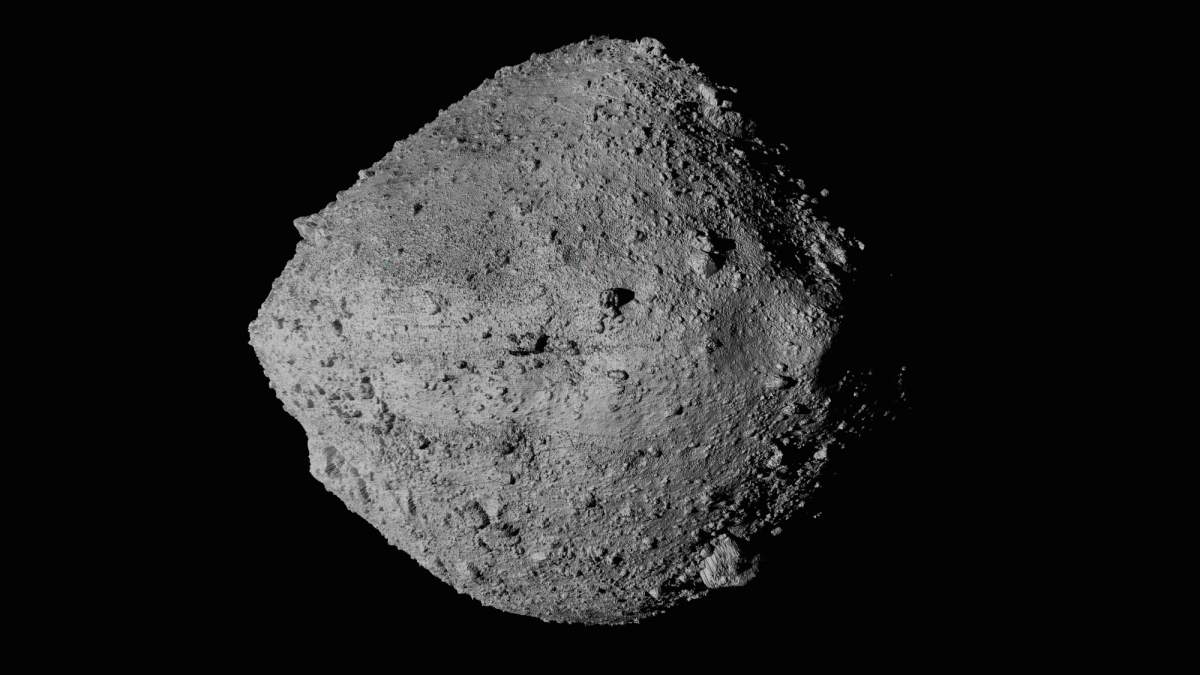Earth is about to receive the largest asteroid sample captured in space, one that scientists say could offer clues — even possible surprises — about how planets were formed billions of years ago.

NASA’s OSIRIS-REx mission will deliver on Sunday material collected back in 2020 from the surface of asteroid Bennu, located more than 200 million miles (322 million kilometres) from Earth.

The OSIRIS-REx spacecraft is expected to land in the Utah desert around 11 a.m. ET on Sept. 24, carrying rocks and dust samples weighing roughly 250 grams, or 8.8 ounces.
According to NASA, the sample from Bennu will offer a window into the time when the Sun and planets were forming about 4.5 billion years ago.
This would be the first time that the United States brings an asteroid sample to Earth — and Canadians are also involved.
The Canadian Space Agency provided the OSIRIS-REx Laser Altimeter, which is a laser system that helped scan the surface of the asteroid and gave detailed information about its features.

Canada will receive a portion — four per cent — of the Bennu sample for research.
The overarching purpose of this robotic mission, which was launched in 2016, is to help scientists understand how life started on Earth and how planets were formed in the solar system.

Get breaking National news
“These rocks are coming from really the very, very beginning of the solar system when our planet was forming,” said Kim Dait, senior curator of mineralogy at the Royal Ontario Museum, who is part of the Canadian team working on OSIRIS-REx.
“The one thing I can guarantee is that we will find something we didn’t expect,” she told Global News in an interview.

Michael Daly, director of the Centre for Research in Earth and Space Science at York University, is the instrument scientist for the OSIRIS-REx Laser Altimeter.
His lab group will conduct a thermal analysis of the portion of the asteroid sample that Canada will get to understand how Bennu holds and distributes heat.
“We know there’s different types of material in Bennu,” Daly said. “We’re hoping we sample a good cross-section of it, so there’s going to be a lot of work for the whole team,” he said.
What is Bennu?

Rich in carbon, Bennu is a black, roundish rock bigger than New York’s Empire State Building.
While most asteroids in the solar system are located between Mars and Jupiter, Bennu’s relative proximity to Earth made it easier to access.
Scientists believe its rocky surface could include clay minerals and rock structures known to contain water.
According to the CSA, OSIRIS-Rex mission might even detect the presence of organic molecules like sugars or amino acids, which are essential to all forms of life on Earth.
“Finding organics on an asteroid could support the idea that the chemistry needed for life first emerged far from our planet, and was brought here by meteorite impacts long ago,” the CSA says on its website.

There is also a very small chance that Bennu could hit Earth in the next century, giving scientists all the more reason to study it and prepare for how to defend the plant against a potential impact, NASA says.
This is not the first time that asteroid samples have landed on Earth.
Japan has retrieved samples from other asteroids twice in the past two decades, although just tiny amounts.
— with files from Global News’ Alyssa Julie and The Associated Press









Comments